Did you know that the average American loses around 42 hours a year to traffic jams? That’s more than a full working week! And that figure is likely even higher in the most congested cities.
We’ve all been there. You’re driving along when suddenly, traffic slows and comes to a standstill for no apparent reason. Then, after inching along for what seems like an eternity, the flow of traffic increases just as suddenly as it stopped and the road opens up again as if by magic.
Traffic jams are frustrating because although many are caused by accidents or road construction that we can see, just as many are caused seemingly by nothing. In fact, what causes traffic jams and car crashes is based largely on the number of distractions in cars today that can affect the way you react to certain events.
In this guide, we’ll break down the most common causes of road congestion, explore the science behind traffic jams and share practical tips to help you avoid getting stuck.
Key Takeaways
- There are both external causes of traffic, like accidents or vehicle breakdowns, and driver-related causes of traffic, like distracted driving.
- When it comes to traffic congestion and jams, there are two main causes: everyday delays and surprise disruptions.
- Thankfully, there are a number of steps you can take to avoid traffic, such as using a GPS ahead of time to monitor your route or reducing your own distractions.
What Causes Traffic? 10 Common Culprits
There are several factors that influence how vehicles move on the road. Some elements are predictable, like rush hour or planned construction. However, events like car wrecks and bad weather can be sudden and unavoidable. After all, accidents happen, and with more people on the roads today than in recent years – both driving and walking – they’re more likely to occur.
But what causes traffic jams the most? Here’s a list of the most common factors that affect traffic density and trigger severe congestion:
| External Causes of Traffic | Driver-Related Causes of Traffic |
| Car Accidents and Vehicle Breakdowns | Distracted Drivers |
| Road Construction and Debris | Chain Reaction of Human Decisions |
| Inclement weather | Phantom Traffic Jams |
| Rush Hour | |
| Insufficient Road Capacity | |
| Bottle Necks | |
| Special Events |
1. Car Accidents and Vehicle Breakdowns
Collisions and mechanical failures can block multiple lanes, especially when emergency vehicles need space to respond. The resulting traffic incident delay can ripple far beyond the accident site. Even minor fender benders can cause delays when other drivers slow down to look. In such a situation, delays often persist long after the road is cleared.
2. Road Construction and Debris
Lane closures, resurfacing projects and fallen debris can all create an instant choke point, forcing drivers into stop-and-go conditions. In some instances, the Federal Highway Administration may develop plans to temporarily add more lanes during planned roadwork. However, in many cases, dense traffic and delays accompany construction projects for their duration.
3. Inclement weather
Rain, snow and icy conditions affect vehicle speeds and make roadways more dangerous. Slippery road surfaces reduce traction and increase stopping distances, often causing more accidents and worsening congestion. If just one driver overcorrects or brakes suddenly, it can trigger chain-reaction backups for miles.
4. Rush Hour
The traffic wave during peak hours regularly exceeds road capacity, resulting in chronic traffic congestion. In most major cities, too many cars funnel into highways and toll booths at the same time, creating long delays. Since this surge only lasts a few hours each day, expanding roads isn’t always practical, so commuters simply have to plan around the daily slowdowns.
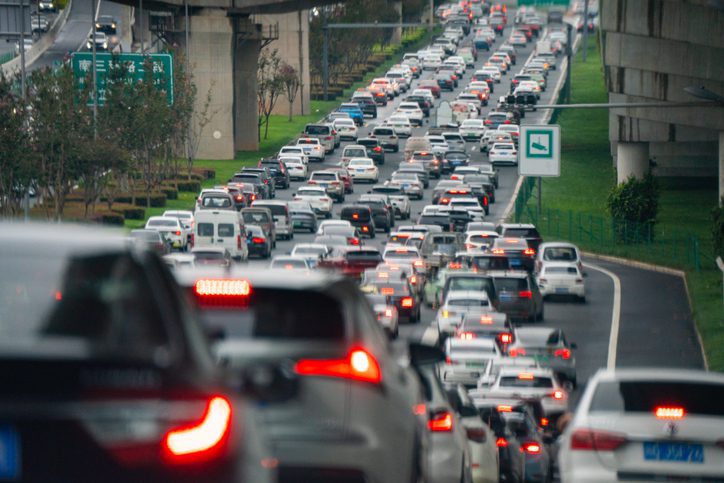
5. Insufficient Road and Highway Capacity
Many highways and arterial roads were designed decades ago and simply weren’t built to handle today’s traffic volume. When traffic demand exceeds capacity, even minor disruptions to the regular traffic stream can result in prolonged delays. Without significant infrastructure upgrades, such jams will persist, especially during peak hours.
6. Bottlenecks
Bottlenecks happen when multiple lanes merge into a single lane or when on-ramps and exits disrupt the normal flow of traffic. These sudden choke points prevent vehicles from moving at a constant speed, causing slowdowns that often ripple for miles behind the initial restriction.
7. Special Events
Concerts, sporting events, festivals and conventions can temporarily overwhelm local roads. Traffic level spikes are typically concentrated around stadiums and venues where too many cars are trying to enter at the same time. While city planners often prepare detours, drivers should expect more traffic than usual whenever large gatherings are scheduled.
8. Distracted Drivers
From texting to eating to adjusting the radio or GPS, distractions behind the wheel are a leading contributor to crashes and slowdowns. The result is often a driver hitting their brakes unexpectedly when they refocus, which sets off a ripple effect and reduces travel speeds for everyone behind them.
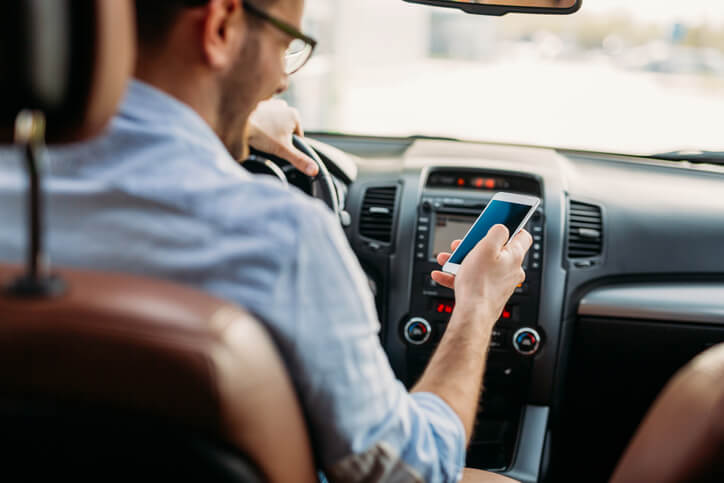
9. Chain Reaction of Human Decisions
Do slow drivers cause traffic? Sometimes. But it’s more often small reactions that trigger ripple effects. Research from the Transportation Research Board shows that at any given point, a single driver’s reaction can create stop-and-go waves that affect hundreds of vehicles. An example is when one car brakes suddenly and the second car behind it responds too late. Such minor corrections can create significant backups, even when there’s no visible cause.
10. Phantom Traffic Jams
If you’ve ever wondered, “Why do traffic jams happen for no reason?” you’re not alone. Also known as “traffic jams caused by nothing,” phantom traffic jams form when minor fluctuations in average speed multiply. For example, if one driver slows slightly, others instinctively brake harder, causing a cascading effect. In real-world experiments using probe vehicles, researchers found that maintaining steady spacing between cars is crucial for preventing phantom jams. Even minor fluctuations can cause a ripple effect that leads to sudden slowdowns.
How Do Traffic Jams Happen?
Typically, there are only two primary ways for a traffic congestion problem to occur: surprise disruptions resulting in temporary congestion and everyday delays that contribute to daily congestion.
1
Temporary Congestion
About half of all traffic slowdowns are caused by unwelcome surprises that occupy part of the roadway, resulting in temporary disruptions to traffic flow. Temporary congestion affects all drivers and is almost impossible to anticipate. Examples include an accident blocking a lane, a construction zone causing a bottleneck or inclement weather conditions.
2
Everyday Congestion
The other half of slowdowns are caused by recurring congestion. Many drivers experience these delays multiple times a week. They are more predictable as they occur whenever too many vehicles disrupt the free flow of traffic during specific times of day (e.g., rush hour) and on weekends. Even though we know when they’re likely to occur, many of us can’t avoid getting stuck in these stop-and-go traffic conditions simply because our schedules are similar to those of the other drivers on the road.
What Is the Science Behind Traffic Jams?
Scientists study what causes traffic jams using speed data and mathematical models similar to those used in fluid dynamics. These models treat cars like particles, allowing researchers to simulate how jams form and move. Generally speaking, when vehicles maintain steady spacing and a constant speed, movement is smooth and predictable. However, the smallest of disruptions — such as sudden braking or a bend in the road that slows drivers — can trigger shockwaves that ripple backward through traffic, even when there’s no accident or obstruction.
What Is the Biggest Cause of Traffic Jams?
The single biggest cause of traffic jams is when the volume of traffic on a road exceeds its capacity, whether that’s due to rush hour peaks or temporary disruptions caused by accidents. In recent years, congestion has increased substantially due to population growth, resulting in a rise in vehicles on the nation’s roads and highways. In many regions, infrastructure has not kept pace with economic development, meaning these challenges may intensify further in the near future as urban sprawl and vehicle ownership continue to follow a pattern of exponential growth.
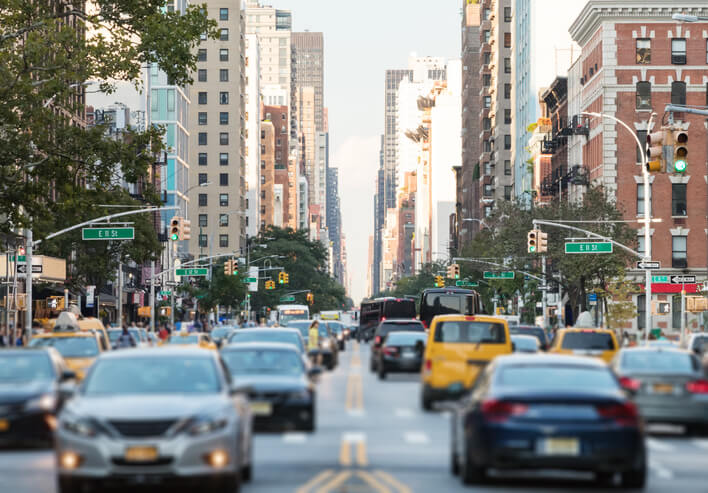
How To Minimize the Causes of Traffic Jams and Congestion
While you can’t always control what causes traffic jams, you can take steps to reduce your chances of getting stuck in gridlock. Understanding what causes congestion can help you change your driving behavior and reduce jams.
Here are some practical strategies to help you avoid unnecessary delays:
Explore Alternative Routes With Maps or GPS
You can source alternative routes for your daily travels through car technology, like a GPS system. Alternatively, apps like Google Maps and Waze incorporate live data to help drivers avoid problem areas. Even if a detour adds a few extra minutes in normal conditions, it could save you a significant amount of time during rush hour traffic while also helping you avoid accident hot spots.
Limit Driving During Peak Hours
Try to avoid driving during peak hours if you have the flexibility to do so. That way, you’ll prevent unnecessarily low speeds that can interrupt your arrival time and add frustration to your day. Shifting your schedule by as little as 15-20 minutes can significantly reduce the time you’ll spend sitting in traffic waiting for the roads to clear.
Stay Updated With Traffic Reports
Knowing what’s ahead gives you the chance to adjust your route and avoid becoming part of the jam. Navigation apps, local radio and real-time highway alerts can all provide critical information about crashes, lane closures, and construction delays.
Reduce Your Own Distractions
Consciously eliminate anything that takes your focus off the road, as this increases your likelihood of a crash by 23 times. For example, texting and driving is a leading cause of U.S. car crashes annually. Other reasons include distracted driving, eating, drinking, smoking, grooming, looking at maps or a navigation system, talking to passengers and looking at events happening in the opposite direction. If you have a young driver in your family, be sure to monitor their habits and educate them on the real dangers of distracted driving.
Want to make it official? Take our distracted driving pledge and commit to keeping your attention where it belongs — on the road.
Practice Safe Driving
When you’re on the road, be sure to:
- Maintain a steady pace and safe following distance.
- Practice smooth acceleration and consistent braking.
- Never drive under the influence of alcohol. Drunk driving causes a fatality roughly every 39 minutes.
- Avoid drowsy driving. Your chances of experiencing road rage or being in a drowsy driving accident are higher on longer drives, nighttime drives and if you slept poorly the night before.
Note that some prescription drugs and over-the-counter medications can increase drowsiness and lower reaction times. It’s wise to check for potential side effects and adjust your driving schedule accordingly.
Take Public Transportation
Using buses, trains or park-and-ride systems helps ease congestion and reduces the stress about whether you’ll arrive at your destination on time. Additionally, it’s safer, cheaper and better for the environment than driving.
Advocate for Smarter Transportation Infrastructure at the Local and State Level
In the long term, reducing congestion requires investment, innovation and community support. Advocating for policies that expand public transit and implement more innovative lane management systems (like adding high-occupancy vehicle lanes to highways) can make a significant difference. Getting involved by supporting initiatives, attending local planning meetings, or voicing your priorities all help to create more efficient road systems in your area.
Stay Protected — From Traffic Jams to Accidents
Traffic congestion happens, but by staying alert, minimizing distractions and practicing steady, consistent driving habits, you can do your part to improve traffic flow and reduce your risk on the road.
Of course, even the most careful drivers can encounter unpredictable situations. That’s why it’s essential to stay protected with reliable auto insurance. The importance of auto insurance cannot be overstated when something unexpected happens. The right policy helps keep you safe and prepared — no matter what lies on the road ahead.
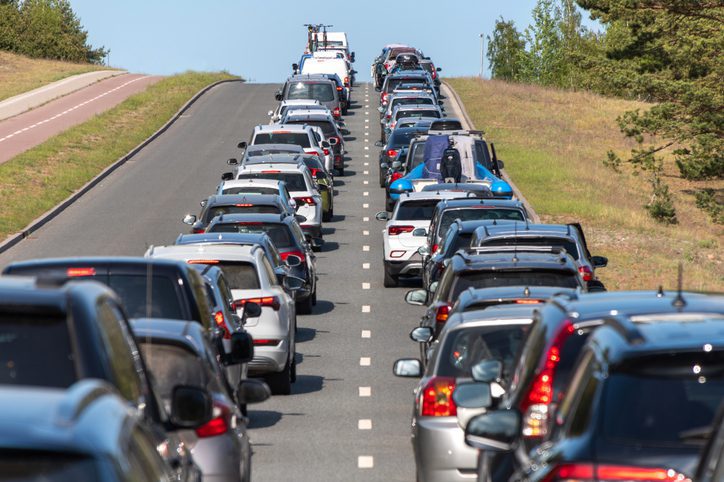
Frequently Asked Questions: Why Does Traffic Congestion Occur?
How Do Traffic Jams Start?
The source of traffic congestion usually stems from a situation where traffic volume exceeds the road’s capacity to handle it, creating a temporary bottleneck. This typically happens during rush hour traffic when multiple lanes merge, during a braking incident that triggers a chain reaction or in the event of an accident.
What Is the Main Cause of Heavy Traffic?
The primary cause of heavy traffic is insufficient road and highway capacity. While traffic incidents and construction play a key role, the bottom line is that, across America, there are more cars on the road than the supporting infrastructure was designed to handle.
What Causes Traffic Jams on Highways?
Highway traffic jams are often caused by traffic incidents, merging lanes, queues for toll booths and bottlenecks where on-ramps or exits disrupt the normal flow of vehicles.
Why Has Traffic Increased So Much?
Traffic congestion has increased substantially in recent years due to population growth, the expansion of commuter zones and higher vehicle ownership rates.
Where Is Traffic the Worst In the US?
According to recent reports, the metro areas that see the highest delays include Los Angeles, New York City, Chicago, Boston, San Francisco, Miami and Philadelphia.2
What Caused the World’s Largest Traffic Jam?
The world’s largest recorded traffic jam happened in 2010 on China’s National Highway 110. It stretched more than 60 miles and lasted 12 days. The jam was caused by a combination of heavy coal truck traffic heading to Beijing, road construction work that reduced the number of lanes and the highway being overloaded with traffic.3
What’s the Best Solution for Traffic Jams?
There’s no single fix, but potential solutions include smarter infrastructure, better urban planning and improved public driving habits. Investing in public transit, expanding road capacity and encouraging carpooling can all help to improve traffic flow over time.
2 U.S. News “The 10 U.S. Cities With the Worst Traffic”
3 Dangerousroads.org “The World’s Longest Traffic Jam: A 100km, 12-Day Standstill in China”


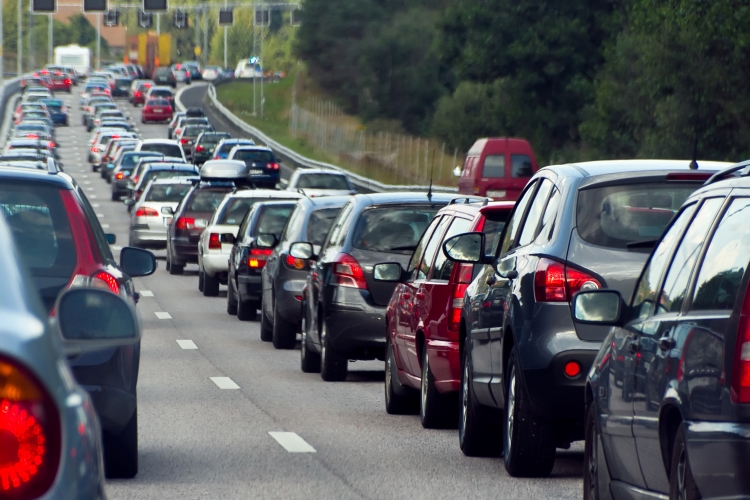

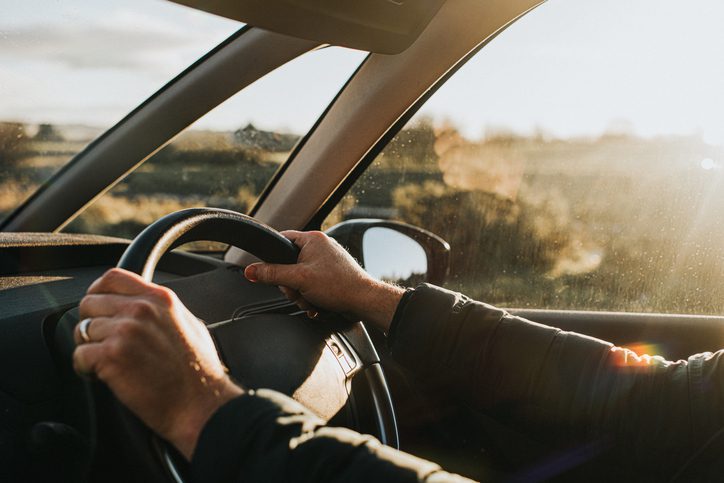
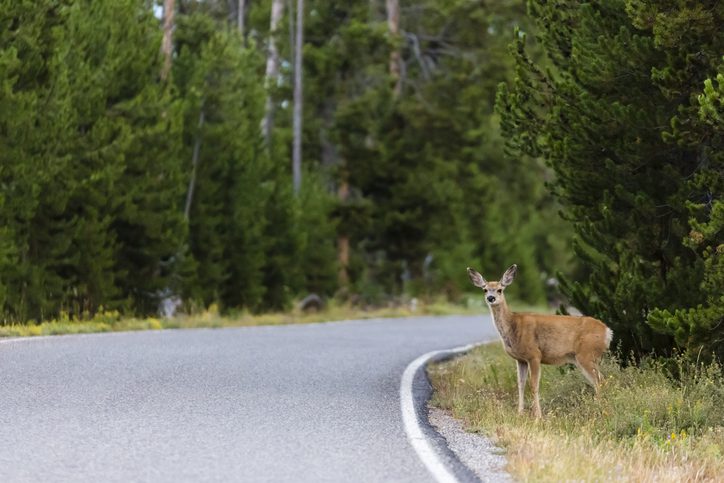
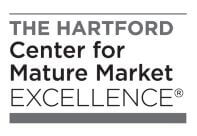
I never tailgate but when people cut in front of me I have to slow down to get some distance between us.
What always amazes me even after over 50 years of driving is how traffic will slow down considerably in certain areas and just as amazingly clear up. This is without accidents or construction.
Traffic jams are because more cars are arriving than leaving the area.
I believe if everyone was using adaptive cruise control, the stop/start would be reduced and therefore traffic would move better.
The worst traffic I have been in is when the 405 was closed north of the I10 and to Mulholland.
I left Irvine at 8:30AM and the traffic was normal until I reached the La Tijera exit (and took it) as traffic seemed stopped beyond.
Traffic was acceptable for maybe a mile and then stopped. By then it was around 10:00AM. We crawled occasionally and I was becoming quite uncomfortable from my morning coffee but could not see any relief. By then it was 12:30 and we were crawling occasionally somewhere in the Holywood Hills. We approached a traffic signal and I realized a small shopping center appeared on the left so I headed to it. Found a parking spot. Wandered around until I found a restroom returned to my car and got in the left turn lane. The light turned green and I was back in traffic 6 cars behind my original position!!! By then it was 1:45PM and it took another 45 minutes to get to my 2:00PM meeting in Santa Clarita at 2:30PM.
Not a happy camper!!
Learn to drive in heavy traffic with minimal use of the brakes. Every time brake lights go on, it exacerbates congestion.
Only takes one person to start a traffic jam.
Usually started by someone driving slow in the passing lanes.
I have been driving the same freeways and roads in Las Vegas for 50 years and have observed traffic flow patterns. It seems that when the roadway changes direction or an incline causes the driver to lose temporary sight line, they slow down, which causes a chain reaction.
Many drivers are timid and too cautious, causing frustration for the rest of us.